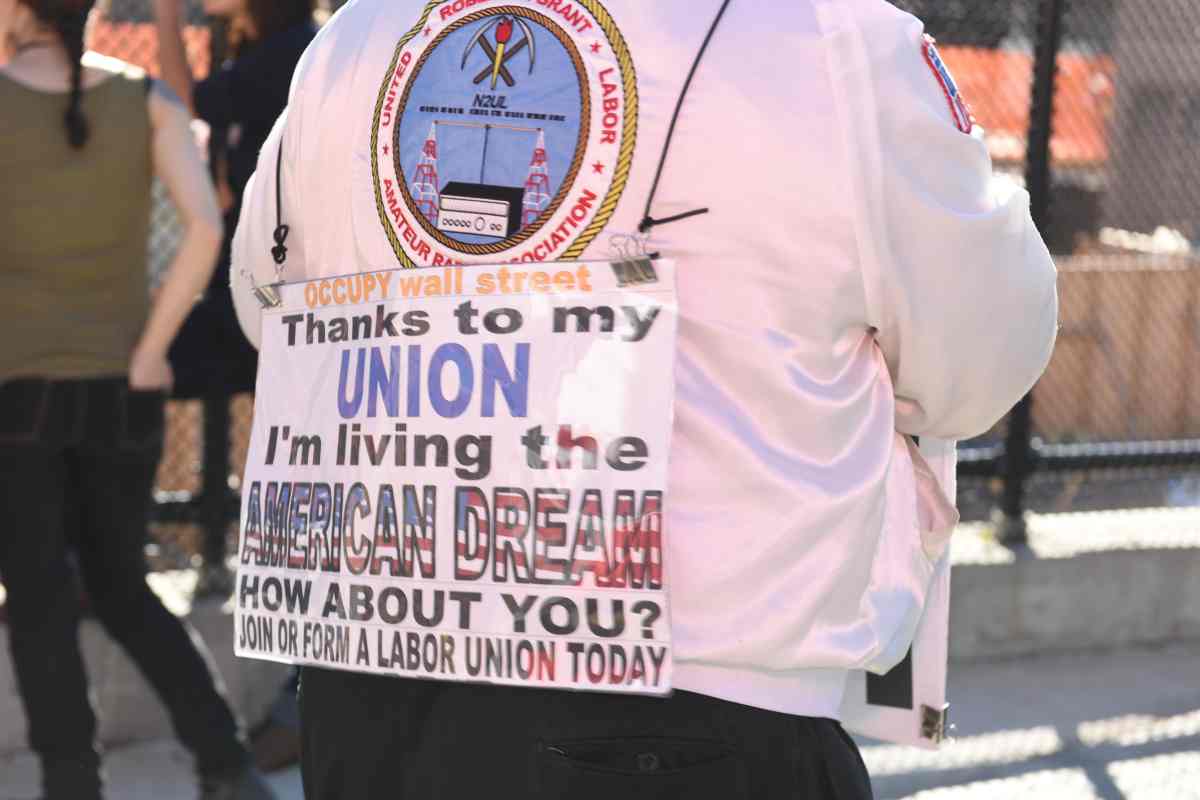With Labor Day approaching I phoned John R. Durso, Long Island’s preeminent labor leader. In the spirit of the holiday, I asked him about unionization on Long Island today.
Durso, who is not only president of the Long Island Federation of Labor – the fourth largest such organization in the U.S. – but a much-admired spokesman for labor’s rank and file, said unions in general were doing well, steadily increasing their memberships and diversifying, particularly in the service industries.
His comments brought to mind the role that unions played in the lives of my maternal grandparents and great-grandparents. They worked in the garment trades and were active union members. On my father’s side, my great-aunt and great-uncle belonged to the International Workers of the World, better known as Wobblies. I believe the unions changed all their lives for the better. I remember them being fiercely loyal in their membership.
“The workforce today is far more diversified,” Durso continues. “So is union membership. There is much more participation involving women and minorities.”
This reflects the labor movement’s own diversification and organizing strategy, focusing on bringing collective bargaining to government and service industries. While the nation’s overall unionization rate is currently about half what it was a generation ago, unionization is actually rising among government employees, the healthcare workforce and unskilled service providers.
Greg DeFreitas, a Hofstra economist who studies unionization, reports that public sector union membership rose from two-thirds of all wage/salary employment in the late 1980s to 73 percent by 2004-2006, while over the same period the union share of private sector workers dropped from 18 to 13 per cent.
The effect on the regional economy has been outsized. Through union membership, hundreds of millions of dollars in spending power has gone to local teachers, police, program administrators, secretaries, nurses, lab technicians, janitors and domestic workers.
Not only do these workers collect bigger paychecks, they draw bigger and more comprehensive benefit packages as well. Their deductibles are lower – sometimes zero. Multiple vacations and extended holiday weekends, once the stuff of fantasy, now are taken for granted.
Last year, Professor DeFreitas produced a remarkable study that depicted the stark contrast between union and non-union lives. He found that the median Long Island union paycheck is now more than 50 percent higher than what’s earned by similar non-union workers. Factor in health insurance, fringe benefits, overtime pay, employer pension contributions,
extended vacations, and pay-for-training, and the gap widens considerably.
Local union growth continues. At the L.I. Federation of Labor, affiliations with the New York State Nurses Association, two teamsters railroad locals, the stagehands union and others have helped expand membership 10 percent this decade. The Service Employees International Union, the nation’s fastest-growing service union, has close to 5,000 L.I. members.
Meanwhile, public-sector retirement and benefit packages continue to pay off big time to select recipients. James Feltman, the retired superintendent of Commack’s schools, collects the biggest school pension checks in the state – more than $325,600 annually. The next nine educators on line are Long Islanders too – every one of them.
Each year the Long Island exodus continues toward places with more reasonable costs of living. We’re going to find a way to make living on Long Island sustainable for all, or this region will implode.
THEIR AVERAGE IS ABOVE AVERAGE
Highest average pay among nonuniformed employees: $89,755 paid to 12 Sands Point village employees
Highest per-pupil employee benefit costs in state: $35,378, Fire Island Union Free School District (enrollment: 37 students)
Highest average pay reported for local employee group: $220,088 paid to Kings Point’s 20 police officers
Twenty-five of the 50 highest-paid local employees in New York State work for the Nassau County Police Department.
Sources: Empire Center, U.S. Census Bureau, USA Today































